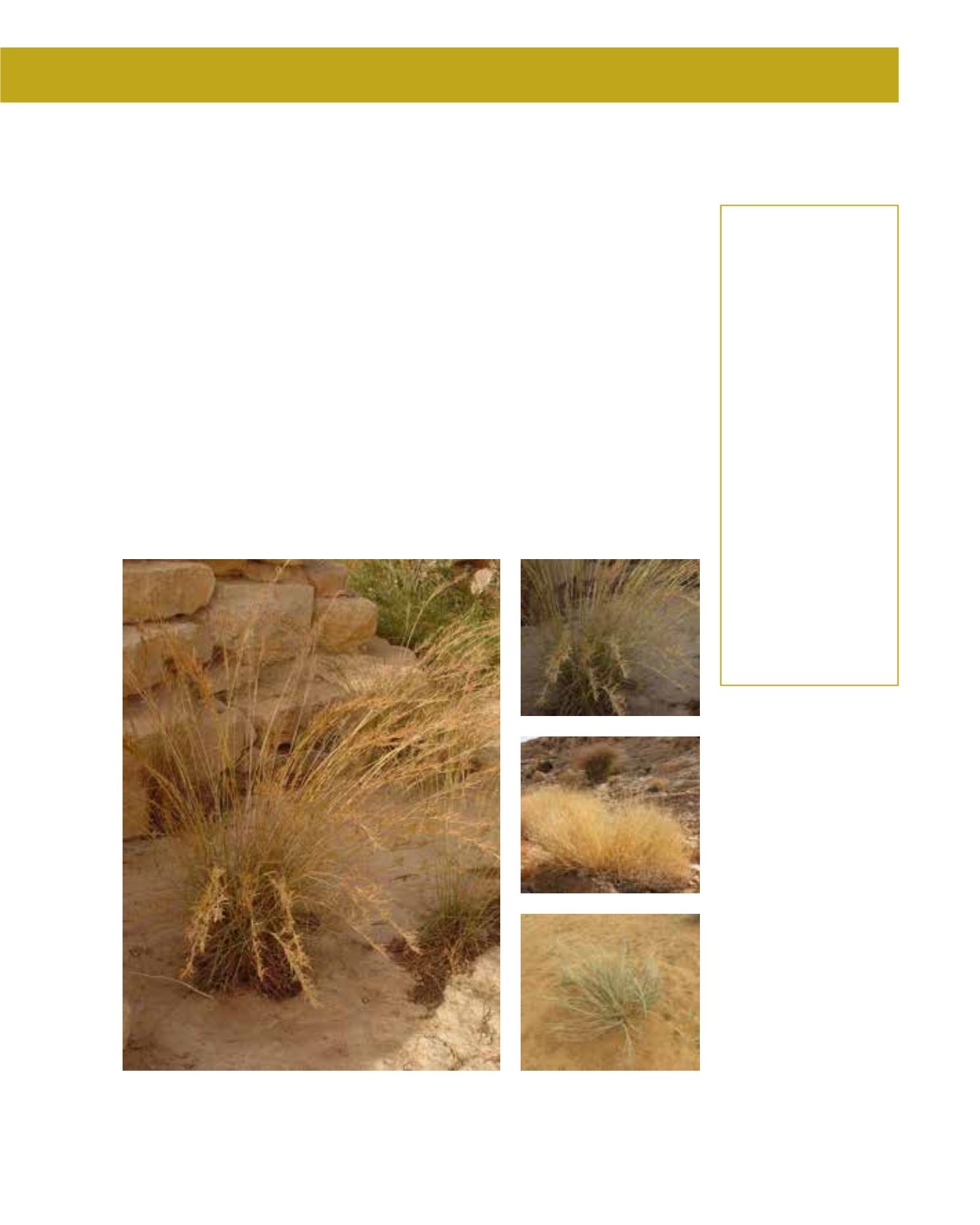

GENERAL
Origin
:
sub-tropical
Humidity
:
very arid, semi-
arid, semi-humid
Propagation :
direct sowing,
sowing and
pricking out
Maintenance :
low
CONDITIONS
Urban climate :
resistant
Dessication :
resistant
Stagnant water :
vulnerable
Irrigation
:
low
Salinity/ppm :
very high (8000
ppm)
Hardiness
:
-3°C
SHAPE
Type
:
grasses
Height
:
0.3 m-0.6 m
Spread
:
0.4 m-0.8 m
Foliage
:
evergreen
FLOWER
Colour
:
silver
Size
:
15 cm
Period
:
March - May
FRUIT
Type of fruit :
achene
Native to Saudi Arabia and known in Arabic as nissi, S. plumosa is a perennial grass widespread
in the desert, where it is important as fodder and also as a stabiliser of sand dunes. Growing in
dense tufts up to 60 cm high, the stem branches densely from the base. Erect culms up to 30 cm
long are glabrous and have woolly internodes. The fine, silvery leaf blades are 15 cm long and
curled. Silvery flowers are borne on panicles up to 15 cm long throughout much of the year. The
junction of leaf and leafstalk is a dense fringe of hairs. The feathery glumes at the base of the
grass spikelets remain for a long time. Most common in spring, it is often overgrazed and then
disappears. S. plumosa grows on shallow stable sands and sandy silt soils, and is highly tolerant
of salts. Extremely drought-tolerant, watering would be necessary only after establishment, if its
greenness needs improvement. Propagation is from seed. Nissi is an important grazing grass and
is recommended for land reclamation and restoration of desert forage resources. It is very useful
in erosion control. Owing to the very attractive aspect of the silvery spikes waving in the wind,
it is an excellent grass for extensive landscape design purposes on a grand scale. It is virtually
maintenance-free.
286
Stipagrostis plumosa,
Poaceae
Desert Grass,
nissi
















